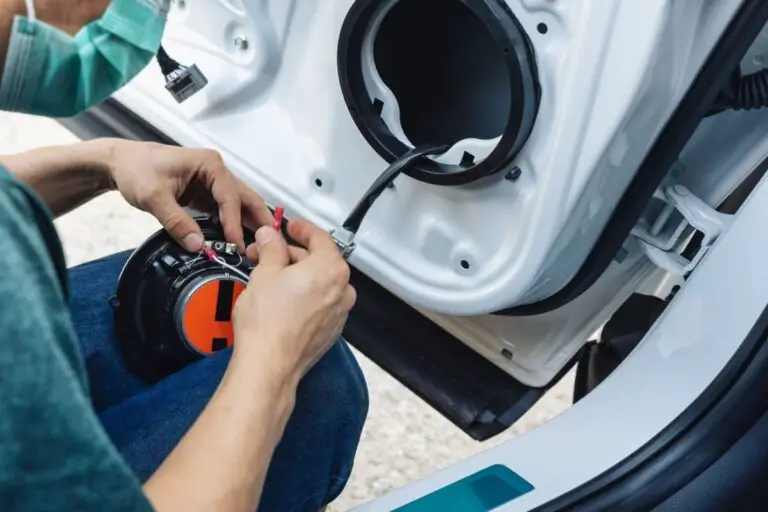Resonator Delete vs. Muffler Delete [Guide] ?
![Resonator Delete vs. Muffler Delete [Guide] ? resonator delete vs. muffler delete](https://automadesimply.com/wp-content/uploads/2023/08/resonator-delete-vs.-muffler-delete.jpg)
When it comes to modifying a car’s exhaust system, two popular options are resonator delete and muffler delete. While both options aim to increase the car’s sound and performance, they have distinct differences that are important to consider.
A resonator delete involves removing the resonator from the exhaust system, which is a chamber that reduces the noise produced by the engine. On the other hand, a muffler delete involves removing the muffler, which is responsible for reducing the overall volume of the exhaust system. While both options can provide a more aggressive exhaust note, they have different effects on the car’s sound and performance.
It’s important to note that both options may be illegal in some areas, and can also void the car’s warranty. Additionally, while a muffler delete may not add much horsepower, it can provide a more significant increase in sound compared to a resonator delete. However, a resonator delete can provide a deeper and more aggressive tone, while still maintaining a reasonable volume. Ultimately, the choice between a resonator delete and muffler delete will depend on personal preference and the specific regulations in your area.
Table of Contents
Resonator Delete
What is a Resonator Delete?
A resonator delete involves removing the resonator from the exhaust system of a vehicle. The resonator is a chamber that helps to reduce the noise produced by the engine. It works by creating a counter sound wave that cancels out some of the noise produced by the engine.
Pros and Cons of a Resonator Delete
Pros:
- Increased exhaust flow, which can lead to a slight increase in horsepower and torque.
- Improved exhaust note, with a deeper, more aggressive tone.
- Can be less expensive than a muffler delete.
Cons:
- Louder exhaust note, which can be too loud for some drivers and may violate local noise ordinances.
- May cause the check engine light to come on.
- Can void the vehicle’s warranty.
- May not be legal in some states.
How to Perform a Resonator Delete
Performing a resonator delete can be a relatively simple process, but it is important to note that it may not be legal in all areas. Additionally, removing the resonator may void the vehicle’s warranty.
Here are the basic steps for performing a resonator delete:
- Locate the resonator in the exhaust system.
- Use a cutting tool to remove the resonator from the exhaust system.
- Install a straight pipe in place of the resonator.
- Reconnect any necessary clamps or brackets.
It is important to note that performing a resonator delete may require some welding or fabrication skills, so it may be best to have a professional perform the work. Additionally, it is important to check local and state laws to ensure that a resonator delete is legal in your area.
Muffler Delete
What is a Muffler Delete?
A muffler delete is a modification made to a vehicle’s exhaust system where the muffler is removed or replaced with a straight pipe. The muffler is a component of the exhaust system that is designed to reduce noise levels by muffling the sound waves produced by the engine. By removing the muffler, the exhaust system is left with a straight pipe that allows the exhaust gases to escape more freely, resulting in a louder and more aggressive exhaust note.
Pros and Cons of a Muffler Delete
The main advantage of a muffler delete is a more resounding, throatier noise. Without all that sound-deadening, you’ll end up with a much more aggressive car. However, it is important to note that a muffler delete won’t add much horsepower – if any. Additionally, a muffler delete is illegal in many areas and may exceed local sound ordinances, leaving you open to a ticket. It may also trigger the Check Engine Light and void warranties.
Pros:
- More aggressive exhaust note
- Cheaper than a resonator delete
- Simple to perform
Cons:
- Illegal in many areas
- May exceed local sound ordinances
- May trigger the Check Engine Light
- Voids warranties
How to Perform a Muffler Delete?
Performing a muffler delete is a relatively simple process that can be done in a few hours with the right tools. However, it is important to note that a muffler delete is illegal in many areas and may void warranties. Therefore, it is recommended to check local and motorsport regulations before performing a muffler delete.
To perform a muffler delete, follow these steps:
- Raise the car on a hoist or jack stands and secure it in place.
- Locate the muffler and remove it by unbolting it from the exhaust system.
- Install a straight pipe in place of the muffler and secure it in place with clamps or welding.
- Start the engine and check for any leaks or rattles.
It is important to note that a muffler delete may exceed local sound ordinances and may trigger the Check Engine Light. Therefore, it is recommended to have a professional perform the muffler delete to avoid any legal or warranty issues.
Resonator Delete vs. Muffler Delete
Differences Between Resonator Delete and Muffler Delete
Resonator delete and muffler delete are two modifications that car enthusiasts often consider to enhance the sound and performance of their vehicle. While both modifications involve removing parts of the exhaust system, there are some key differences between them.
A resonator delete involves removing the resonator, which is a component that helps to reduce exhaust noise. By removing the resonator, the exhaust sound becomes louder and more aggressive. On the other hand, a muffler delete involves removing the muffler, which is a component that reduces exhaust noise and improves exhaust flow. By removing the muffler, the exhaust sound becomes louder and deeper.
Which is Better: Resonator Delete or Muffler Delete?
The answer to this question depends on personal preference and the specific circumstances of the vehicle and its intended use. Resonator delete is often preferred by those who want a louder and more aggressive exhaust sound, while muffler delete is often preferred by those who want a deeper and more refined exhaust sound.
It’s important to note that both modifications can make the car louder and may result in a slight increase in horsepower. However, it’s essential to check local and motorsport regulations before making any modifications to the exhaust system.
Considerations Before Choosing Between Resonator Delete and Muffler Delete
Before choosing between resonator delete and muffler delete, there are a few things to consider. Firstly, removing the resonator or muffler may make the car louder than legal limits, which can result in a fine or even impoundment of the vehicle. Secondly, removing the resonator or muffler may void the car’s warranty. Finally, it’s important to consider the overall impact on the car’s performance and whether the modification is worth the cost and effort.
Conclusion
In summary, both resonator delete and muffler delete modifications have their pros and cons. Resonator delete provides a deeper, more aggressive exhaust sound but has minimal impact on performance, while muffler delete results in the loudest, most resounding noise but may not add much horsepower.
It’s important to consider local and motorsport regulations before making any modifications to your exhaust system. Additionally, it’s crucial to weigh the potential benefits against the drawbacks and decide which option best suits your preferences and needs.
Ultimately, whether you choose to do a resonator delete or a muffler delete, it’s essential to have a skilled mechanic perform the modification. The cost of the parts and labor can vary, and illegal modifications can result in fines or other legal consequences.
In conclusion, both resonator delete and muffler delete can provide a more aggressive exhaust sound, but it’s important to consider the potential drawbacks and adhere to any regulations. A skilled mechanic should perform the modification, and the cost can vary depending on the parts and labor required.
FAQs
Is it legal to delete the resonator or muffler?
In most places, both resonator delete and muffler delete are illegal. However, it is important to check local and motorsport regulations before making any modifications to your car’s exhaust system.
Can deleting the resonator or muffler increase horsepower?
While both modifications may result in a slight increase in horsepower, it is important to note that the increase is minimal and may not be noticeable. Additionally, removing the resonator or muffler can cause damage to the engine and void the car’s warranty.
Will deleting the resonator or muffler make the car louder?
Yes, both resonator delete and muffler delete can result in a louder exhaust sound. However, it is important to keep in mind that a louder exhaust can be annoying to others and may result in fines or tickets.
How much does it cost to delete the resonator or muffler?
The cost of deleting the resonator or muffler can vary depending on the make and model of the car and where the modification is being done. On average, the parts for a resonator delete or muffler delete can cost around $50 – $150. If a professional is hired to do the job, the cost can increase to around $100 – $200.
Can deleting the resonator or muffler cause any problems with the car?
Yes, deleting the resonator or muffler can cause problems with the car’s performance and may result in decreased fuel efficiency. Additionally, removing the resonator or muffler can cause damage to the engine and void the car’s warranty.







